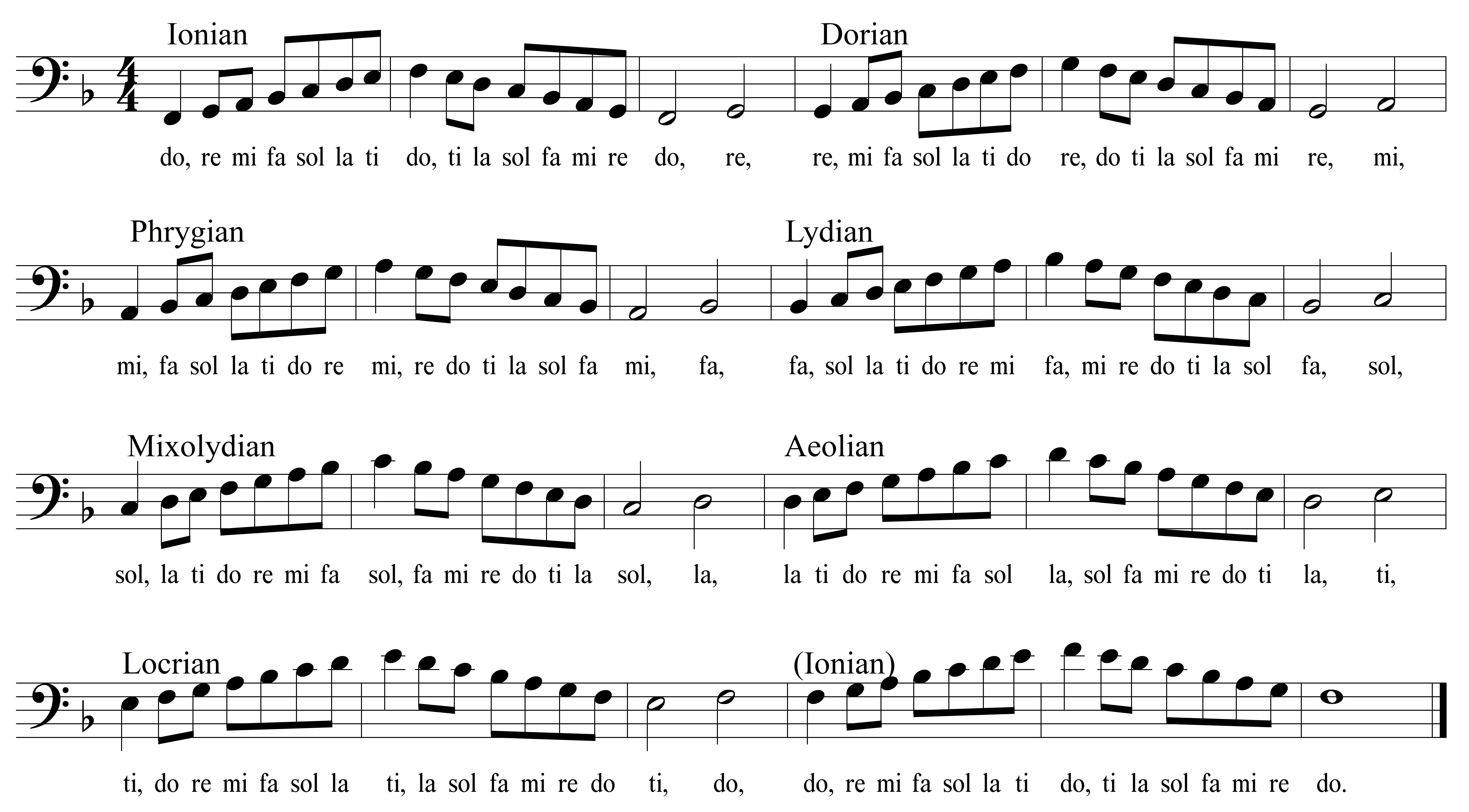Integrated Aural Skills 2019-20
Reviewing Modal Scales
Modal Scales
Spotify Playlist: “UI Aural Skills IV Modal Scales” by “mirandawilson”
In Unit 12, we began our study of modal scales.
There are two ways of spelling modal scales using solfege. This is because modal scales are used in more than one way in musical contexts.
The “Start on Do” Method
Many types of folk music from across the world are composed in modal idioms. For example, many Spanish folk songs are in Phrygian mode, while many traditional English songs are in Mixolydian mode.
Using this method, we can take the lowest pitch of the scale as do, and adjust the other degrees of the scale as necessary. For example, using this method, the Mixolydian scale would be spelled “do, re, mi, fa, sol, la, te, do.”

The “Diatonic Scale on Different Degrees” Method
We can also interpret the modal scales as diatonic (major) scales that start on degrees of the scale other than do. We can find modal scales in Classical repertoire, for example in many of Mozart’s compositions, as part of sequential materials that lead to modulations. (For an example of this procedure, see the first movement of Mozart’s Piano Sonata K. 545.)
In this method, we can use the familiar names of the solfege syllables in the diatonic scale (do, re, mi, fa, sol, la, and ti) and simply starts each modal scale on a different degree. Using this method, therefore, the Mixolydian scale will be spelled sol, la, ti, do, re, mi, fa, sol. The image below shows the modal scales and their solfege.

How It Looks, How It Sounds
As always, it is best to learn ear training concepts both by listening/writing and by singing. Sing this modal scales warm-up every day, transposing it into any key and register that suits your vocal range, until you can fluently sing through it without having to refer to the piano. Notice the patterns of whole and half steps. (For example, notice that only the Phrygian and Locrian scales begin with a half step.)

Challenge: write and sing your own warm-up using the “Start on Do Method.”